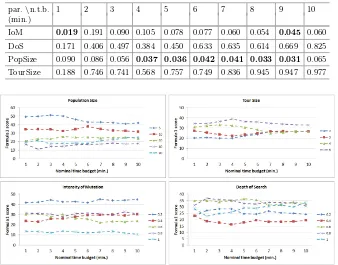An analysis of the Taguchi method for tuning a memetic algorithm with reduced computational time budget
Full text
Figure



Related documents
The normal increase in blood lactate after injection of epinephrine in the present. patient was evidence that muscle glycogen could be broken down at least to
There appeared to be little difference in distribution of adult diphtheria immunity, as measured by the Schick test, between the foreign born and the low income U.S...
122 | P a g e concepts (X=2.84); adapting teaching methods to meet indiv iduals student’s needs (X=2.74); linking students’ ideas, values and beliefs to their classroom
Race condition is an error in clinical programming software which results when two processes try to access the same resource and the result depends on the transaction of
This study investigates the potential of bimetal impregnated catalysts supported on activated carbon derived from biomass for Selective Catalytic Reduction (SCR) of Nitrogen
This ethnographic study examines the social effects of the introduction of an enterprise-level quality control program (CMMI) on professional engineers in a complex
THALASSEMIA AND SICKLEMIA: With a Genealogic Survey CHRONIC HEMOLYTIC ANEMIA IN A WHITE CHILD DUE TO. http://pediatrics.aappublications.org/content/9/3/286 the World Wide
On the other hand, we tried to elucidate the role of this isoform 3 during embryogenesis by analys- ing the relative expression of the haemocyanin isoforms in different embryonic